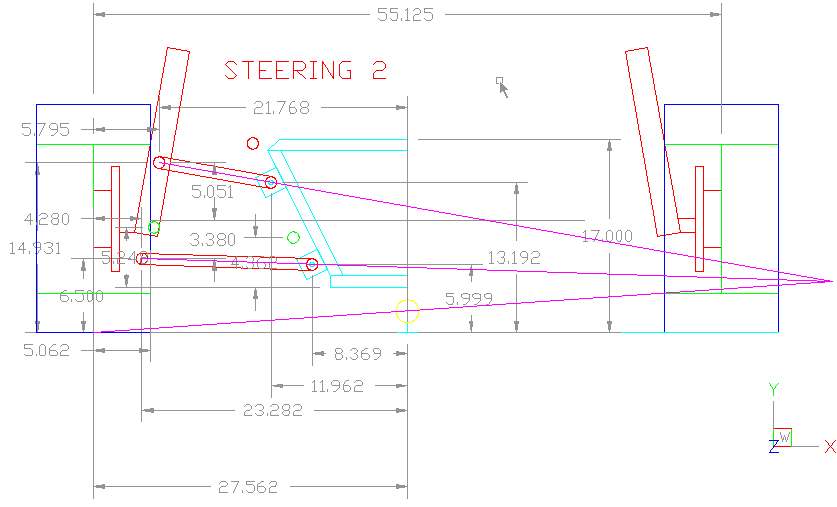If the upper control arm is angled down dramatically, you get a short swing arm length, which can give a fairly aggressive camber curve. It may also make the roll center move around (I have to look it up). I am not convinced I'd notice.
I DO know that you are going to want a LOW front roll center on these cars, to make the front stick. Shoot for ground level. This can be done if the upper and lower arms are parallel, but that takes away from a decent camber curve. Parallel with a SHORT upper arm can give you a reasonable roll center location and camber curve, but the roll center will move more. Packaging will likely dictate what has to work.
To determine the roll center, draw your spindle, tire, and control arms in their locations, and draw a line through their centers off to the distance. Where the upper arm centerline meets the lower arm centerline is your instant center. Draw a line from there back to the centerline of the wheel. Where ~that~ line crosses the center of the vehicle is your roll center.
DON'T COPY THIS DESIGN; I wouldn't do it this way again:

The green circles above are where the inner and out tie rods are. Draw a line from the outer tie rod to the instant center - that's where the inner tie rod needs to sit vertically. Whatever the ratio is for the tie rod location on the spindle (between the ball joints), figure out the same ratio to locate the inner tie rod between the inner control arm pivots. This will minimize bump-steer.
Some rules-of-thumb are having the upper arm 2/3 the length of the lower.
Keep the lower arms parallel (ball-joint to inner-pivot) to the ground.
Keep the upper and lower arms parallel to each other and to the ground as viewed from the side - it makes dealing with bump steer easier, and you don't really need anti/pro-dive in a car this light.
